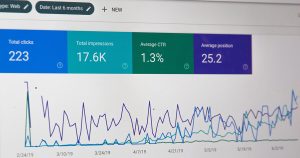Contents
Introduction
URL shortening has become a ubiquitous practice in the digital age, offering a concise and visually appealing way to share links. While the primary goal of URL shorteners is to streamline long URLs, the impact on branding is a multifaceted aspect that deserves careful consideration. In this exploration, we delve into the dynamics of URL shortening and its influence on branding, examining the benefits, challenges, and strategies for integrating shortened links into your brand identity.
The Basics of URL Shortening
URL shortening involves the use of specialized services to create abbreviated versions of long URLs. These shortened links redirect users to the original, longer URL. The primary motivations for URL shortening include saving space, improving user experience, and enhancing the visual appeal of links, especially in contexts where character count matters, such as social media or limited-space advertisements.
Key characteristics of URL shortening:
- Redirection: Shortened URLs act as redirects, seamlessly guiding users from the shortened link to the original destination.
- Customization: Some URL shortening services allow users to customize the tail end of the shortened URL, adding a branded or descriptive touch.
- Tracking: Many services provide analytics and tracking features, offering insights into click-through rates, geographic location of users, and other engagement metrics.
The Branding Potential of Shortened URLs
URL shortening presents several opportunities for branding:
- Visual Consistency: Shortened URLs can contribute to visual consistency in marketing materials, ensuring a clean and uniform appearance in various contexts.
- Customization: Some URL shortening services allow for customization of the tail end, enabling brands to incorporate their name, tagline, or relevant keywords into the URL.
- Enhanced Aesthetics: Shortened URLs often look more aesthetically pleasing and are easier to incorporate into design elements, contributing to a polished brand image.
- Space Efficiency: In contexts where character count matters, such as social media posts or character-limited platforms, shortened URLs save space and allow for more concise messaging.
Challenges and Considerations
While there are branding advantages to using shortened URLs, it’s essential to be mindful of potential challenges:
- Loss of Descriptiveness: Shortened URLs often lack the descriptive keywords found in original URLs, potentially impacting search engine optimization (SEO) and user understanding of the link’s content.
- Trust and Credibility: Users may be cautious about clicking on shortened URLs due to concerns about potential malicious content or link manipulation. Building trust with your audience is crucial.
- Link Longevity: Shortened URLs may be vulnerable to link rot if the URL shortening service ceases to exist or changes its policies, negatively affecting the brand’s online presence.
Strategies for Branding with Shortened URLs
To leverage the branding potential of shortened URLs effectively, consider the following strategies:
- Choose a Reputable Service: Opt for established and reputable URL shortening services that prioritize user safety and provide analytics and tracking features.
- Customize Thoughtfully: If customization is allowed, choose a tail end that aligns with your brand identity, incorporating elements like your brand name or relevant keywords in a concise manner.
- Provide Context: When sharing a shortened URL, provide context and transparency about the destination. Clearly communicate the purpose of the link to build trust with users.
- Monitor Analytics: Regularly monitor analytics and track the performance of shortened URLs. Assess click-through rates, user engagement, and any impact on branding metrics.
- Use in Visual Elements: Incorporate shortened URLs strategically in visual elements such as social media graphics, infographics, and advertisements to enhance visual appeal.
Conclusion
URL shortening can be a powerful tool for enhancing the branding efforts of a business or individual. By thoughtfully navigating the landscape of shortened links and considering the advantages, challenges, and best practices outlined in this exploration, brands can effectively integrate shortened URLs into their online presence, contributing to a cohesive and visually appealing brand identity.
















